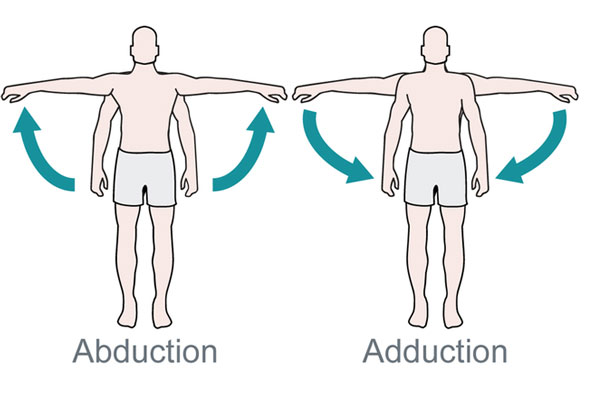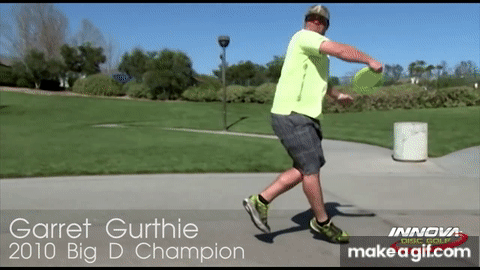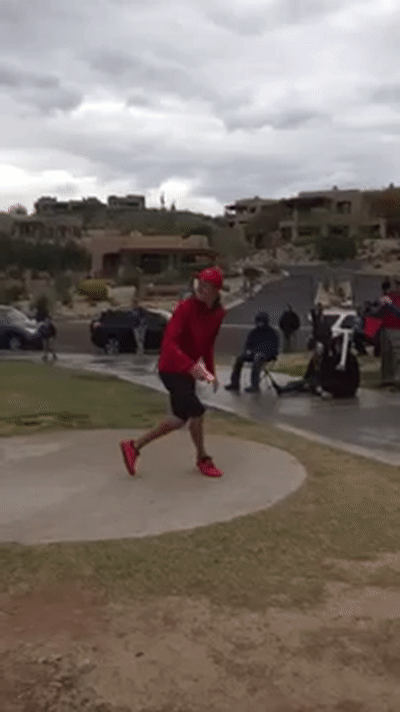Brychanus
* Ace Member *
Can you break down how the hips are involved in translating momentum and ground force up through the body in disc golf, please? I mean could you use Wiggins' form as an example of how it's done right? 'cause I'm still trying to wrap my head around the specifics...
TL;DR: Exactly the same way as in ball golf, but swinging your arm and leveraging out the disc with one arm on a parabolic line rather than the club with two arms hitting the ball on a parabolic line.
Still TL; DR: Just do it.
Not Long Enough, Tell Me More:
You should watch The Hips golf videos SW linked closely and probably more than once. Visual memory helps you understand how to the hips move and why separating them arbitrarily from everything else is a mistake. Babies do this before they got all their adult-like schemas and anxieties and attention to verbal details and it helps them learn to move. It's good to be a baby when learning a new motor skill. For some reason people seem to have particular difficulty talking about the hips or even understanding what they are physically - maybe because they never had to think about learning to walk unless they are an adult going through rehabilitation.

Once you see the hips in motion and how fluid that action really should be, you need to see the fall in ball golf (and baseball, and tennis, etc). Start with it here, which is basically the smallest "shift from behind" you can muster. Clement is falling into the plant.
https://youtu.be/0CSHqnYNijw?t=145
Don't believe it matters or is there? Try a golf swing with and without that mechanism.
Then watch that entire video, and any of his other videos. He may not be your style, but he's a gifted instructor IMHO. His work is also basically the mechanics for a narrow-stance standstill in DG.
Once you understand that little fall, you just need to know that this is most of the DG swing (really, I'm not ****ting you):
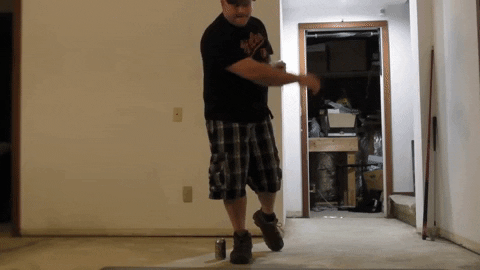
How does that relate to the hips and momentum and ground force? He hops to fall onto the can. Gravity gives him momentum. That's what Clement is doing. Then, do you see how SW/seabas kinda compresses when he lands and his butt sticks out? That's part of the "ground force reaction" - generating a lot of weight when you land that powers the swing (gravity acting on mass and landing). Don't force it - that's just his leg resisting the ground when he lands in good posture. He's feeling that compression & leverage against the ground lead into his plant hip, and *zing* - now the shoulder and arm can come through (after being coiled into the rear side through his core). This little hop drill was one of the biggest "AHAs" I've had.
Why is this so much harder in DG? Well, it's in part because everyone just wants to X-step because they think it looks cool and doesn't realize all the other things that need to work well first. They get all twisted up and confused and lost (me too). And there are IMO still a couple things that make DG harder. The Door frame drills teach you to do this same thing - connecting the hips and the fall and everything else - but now shifting your weight together over a bigger vertical and horizontal shift and with a bit of diagonal than ball golf. You're really cooking from there if you get those ideas in your swing.
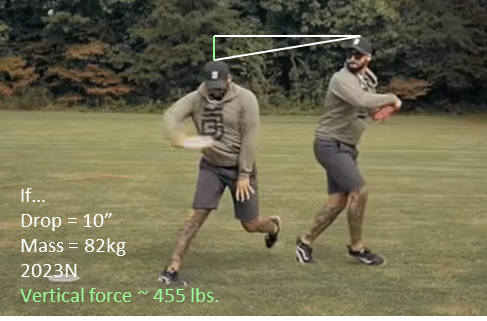
Conclusion:
Most people getting to throwing 300' have done it without learning to get this fluid posture and hip action connected to the fall and ground force reaction. Then usually soon after that they get trapped.*
This is one of the best posts here IMO tying these concepts together:
https://www.dgcoursereview.com/forums/showpost.php?p=3361690&postcount=6
Practical takeaways:
1. In high level players in DG and other sports, these mechanics are usually apparently much smaller when they're well-learned because the player has become so efficient. Know that, and use exaggerations to learn them the first time. These are some of the ideas that I usually find missing in instructional content and why I'm glad I came here.
2. Learn to fall and resist the ground as part of the shift. Narrow, wide, diagonal, and with feet moving.
3. I keep saying it recently because I think seabas/SW was well ahead of his time talking about horizontal and vertical forces. I think most players are doing themselves a disservice not working with the vertical, and not just because my body type prefers it.
Wisdom:
Sorry to be so self-referential, but I know my journey better than anyone's.
*I had a chat with a friend during a Sunday round. He knows I'm obsessed with mechanics, and we talked about the saturated YouTube space and I asked whether I should revise or redo my content, or if it even mattered. His response was interesting because he thinks mechanics-focused work might not be for everyone, and I might benefit from developing more (competitive play, challenging my swing to improve in different courses, etc.). But the most interesting thing to me was that we both agreed that learning "The Good Throw" - if that's what I'm learning here - is much harder to learn (not just because of DGCR), and it takes a major commitment compared to the exotic weaker swings out there. He can throw 330' with a Destroyer. He's not that bad at it anymore. That might be good enough for him. Sunk cost fallacy or not, it's not good enough for me. There is deep wisdom in knowing what you're getting yourself into and whether it's worth it to you.
My swing still needs work. But learning at DGCR, my body looks more like this. It didn't before. I'm not forcing it. It's on the right track. It was not before I embraced this journey. YMMV.

I hope something in there was helpful. Now you gotta go do it.

